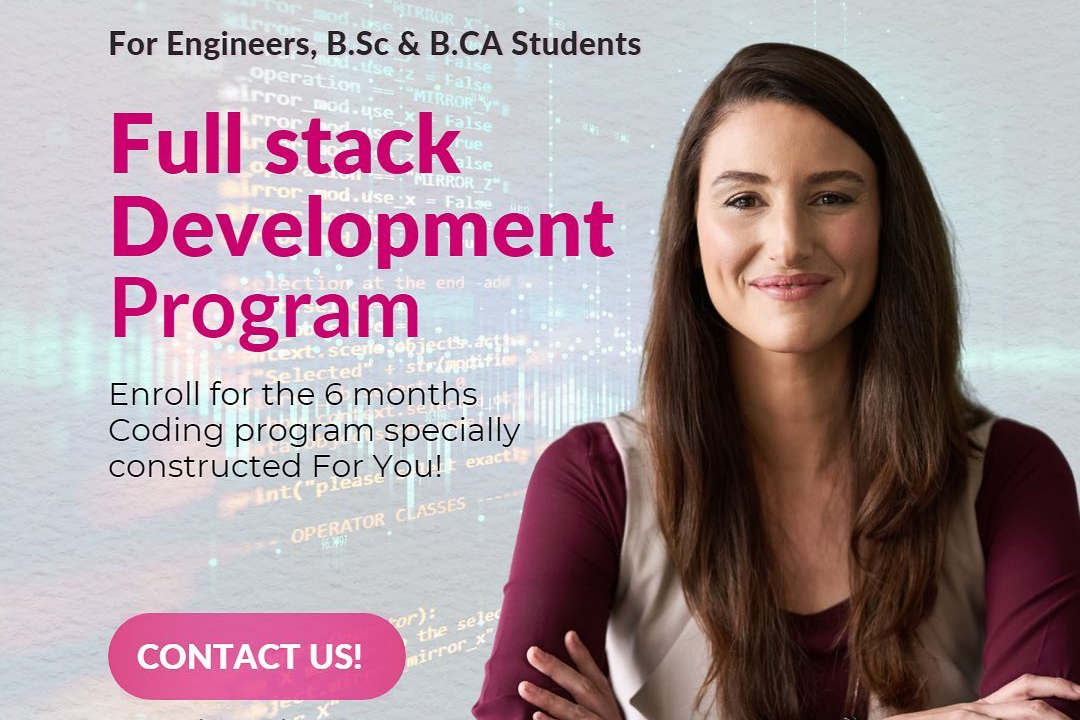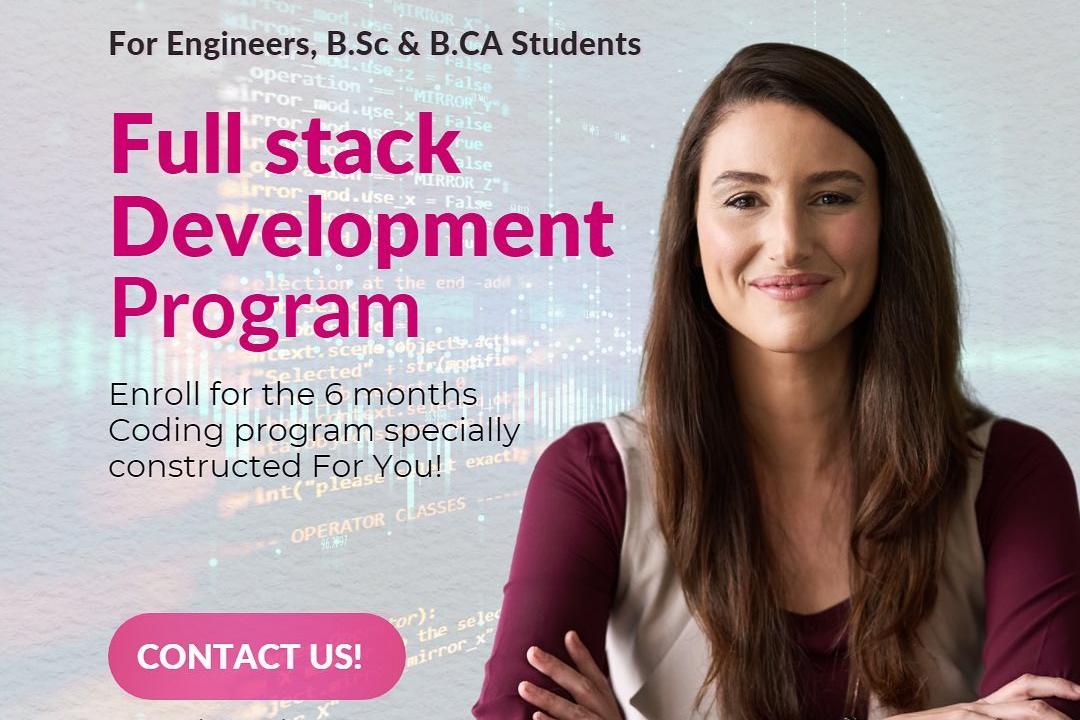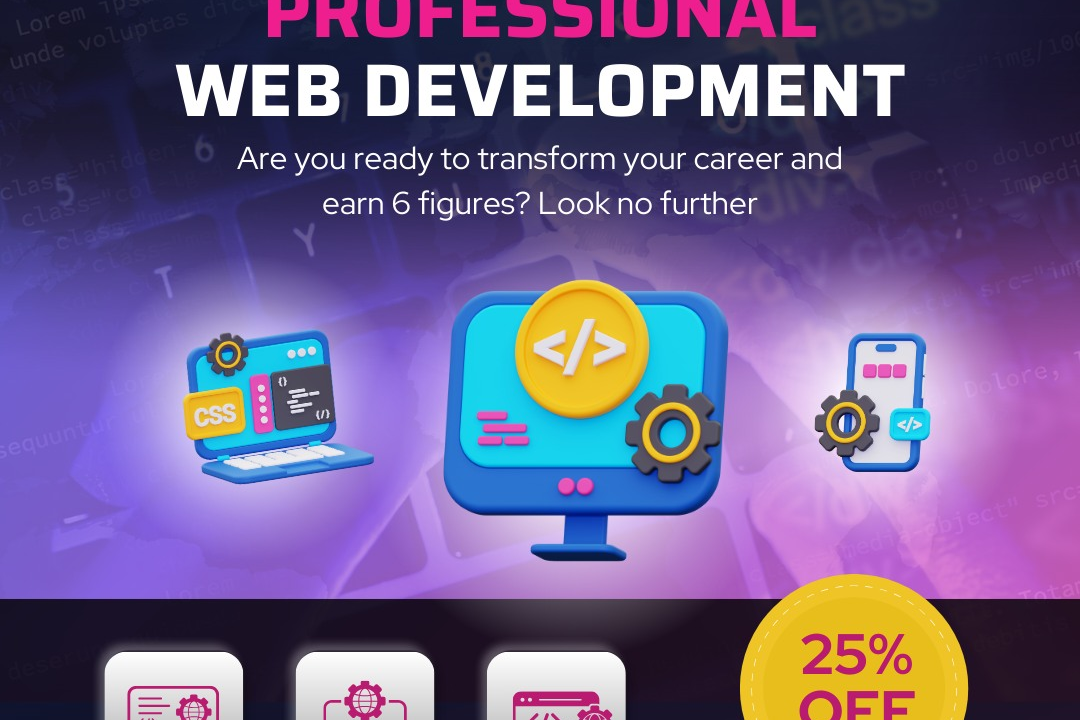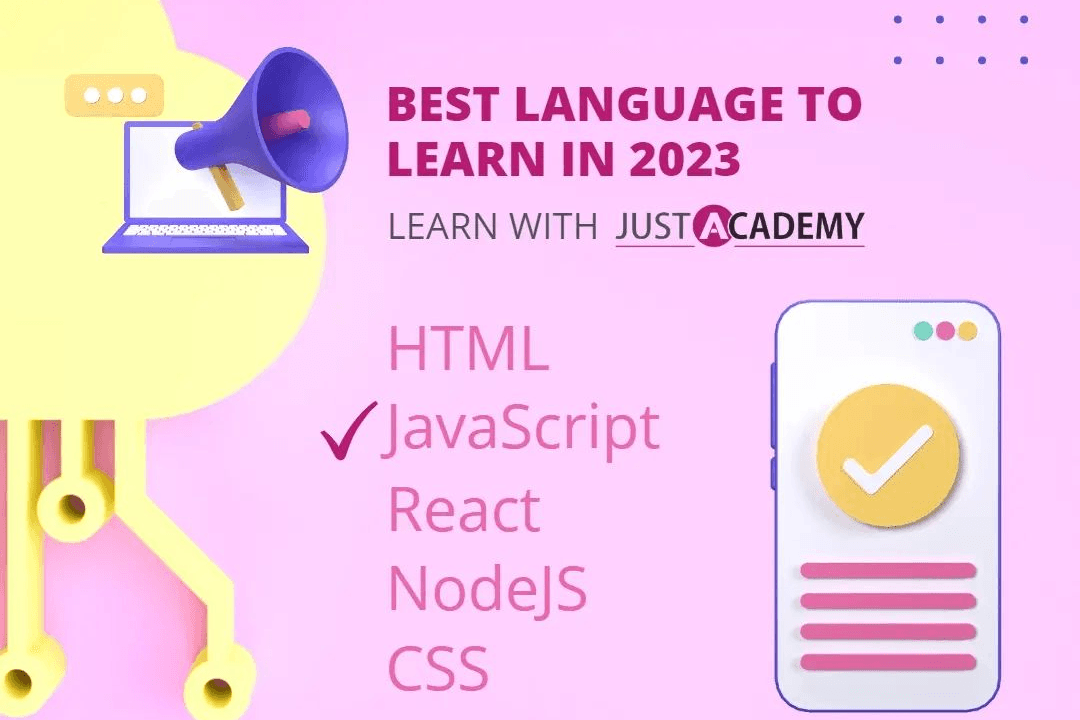Laravel Prcatical Interview Question
Essential Practical Laravel Interview Questions for Developers
Laravel Prcatical Interview Question
Laravel practical interview questions are crucial for assessing a candidate's hands-on knowledge and proficiency in one of the most popular PHP frameworks. These questions go beyond theoretical concepts, enabling interviewers to gauge a developer's ability to apply Laravel in real-world scenarios, such as building applications, managing databases, and implementing routing. Understanding Laravel through practical exercises not only helps in revealing a candidate's problem-solving skills but also highlights their familiarity with best practices and advanced features of the framework. This approach ensures that employers find developers who can efficiently contribute to building robust web applications with minimal guidance.
To Download Our Brochure: https://www.justacademy.co/download-brochure-for-free
Message us for more information: +91 9987184296
Here are practical Laravel interview questions along with concise answers:
1 - What is the purpose of the `artisan` command line tool in Laravel?
The `artisan` command line tool is used for various command line tasks such as database migrations, seeding, caching, running jobs, and managing middleware. It streamlines development by allowing developers to handle repetitive tasks efficiently.
2) Explain the concept of service providers in Laravel.
Service providers are the central place for configuring and registering services in a Laravel application. They bootstrap the application, binding services to the application’s service container, thus promoting a modular design.
3) How does Laravel implement routing?
Laravel uses a routing system to define application routes in the `web.php` file, where developers can specify URIs and map them to controller actions, enabling a clean and organized URL structure.
4) What is Eloquent ORM?
Eloquent is Laravel's built in Object Relational Mapping (ORM) system that provides an easy and expressive way to interact with the database using model classes, allowing for simplified database queries and relationships.
5) What are migrations in Laravel?
Migrations are a version control system for database schemas, allowing developers to define and modify database structure using PHP code instead of SQL, facilitating collaboration and easier database management.
6) How can you implement form validation in Laravel?
Form validation in Laravel can be accomplished using the `Validator` facade or by using form request classes that encapsulate validation logic, ensuring that incoming request data meets specified criteria before processing.
7) What are middleware and how are they used in Laravel?
Middleware are filters that intercept HTTP requests entering the application, allowing developers to perform actions such as authentication, logging, and request modification before reaching the application routes.
8) Describe the role of the `.env` file in Laravel.
The `.env` file stores environment variables for the application configuration, such as database credentials, application keys, and debugging settings, enabling secure and flexible configuration management.
9) How do you manage database relationships in Eloquent?
Eloquent supports various types of relationships, such as one to one, one to many, and many to many. Developers can define relationships using methods like `hasOne`, `hasMany`, and `belongsToMany` within the model classes.
10) What is the concept of route model binding?
Route model binding simplifies the retrieval of model instances based on route parameters. By automatically injecting the model instance that corresponds to the given ID in the route, it enhances code readability and reduces boilerplate.
11 - How do you implement authorization in Laravel?
Authorization in Laravel is typically handled using Gates and Policies, which define abilities that users can perform on various resources, providing a structured way to manage user permissions.
12) What is the purpose of the `storage` folder in Laravel?
The `storage` folder is used for storing application files such as logs, compiled views, and uploaded files. It helps manage data persistence and temporary files generated by the application.
13) Describe how to handle file uploads in Laravel.
File uploads in Laravel can be managed using the `request() >file()` method, allowing developers to validate the uploaded file, move it to a designated directory, and store information in the database if necessary.
14) What are resource controllers in Laravel?
Resource controllers simplify the process of routing for RESTful APIs by automatically generating routes for common actions like index, create, store, show, edit, update, and destroy based on a singular controller.
15) How do you implement caching in Laravel?
Caching in Laravel can be implemented using various drivers (file, database, Redis) via the Cache facade, allowing developers to store frequently accessed data and reduce load times, ultimately improving performance.
These questions and answers should provide a solid foundation for evaluating Laravel developers during interviews.
Here are additional practical Laravel interview questions along with their concise answers:
16) What is the purpose of queues in Laravel?
Queues in Laravel allow developers to defer the execution of time consuming tasks such as sending emails, processing uploads, or generating reports, which enhances the performance of the application by improving response times.
17) How does Laravel handle authentication?
Laravel provides a built in authentication system with features for user roles, password hashing, and session management, using simple routes and controllers to manage user login, registration, and logout processes.
18) What are Laravel policies?
Policies are classes that organize authorization logic for specific models. They provide a clean structure for controlling access to resources based on user permissions, making it easier to manage complex authorization needs.
19) Explain the use of the `config` function in Laravel.
The `config()` function retrieves values from the application's configuration files. It allows developers to access various configuration settings throughout the application easily, promoting a flexible and manageable setup.
20) How do you set up a task scheduler in Laravel?
The task scheduler can be set up by defining scheduled commands in the `App\Console\Kernel` class within the `schedule` method and utilizing the built in `cron` system to automatically run these tasks at specified intervals.
21 - What is the purpose of the `bootstrap` folder in Laravel?
The `bootstrap` folder contains files related to the application’s bootstrapping process, including the application initialization logic and the autoloader, essential for setting up the Laravel environment.
22) How does Laravel support localization?
Laravel supports localization by allowing developers to define language files in the `resources/lang` directory. These files can be used to store strings for different languages, enabling easy translations throughout the application.
23) What is a service container in Laravel?
The service container is a powerful dependency injection container that manages class dependencies and performs dependency resolution, simplifying the management of objects and their dependencies within your application.
24) Explain the concept of event broadcasting in Laravel.
Event broadcasting allows developers to share real time Laravel events with clients using WebSockets. It enables broadcasting messages and updates to users as they happen, enhancing user engagement in real time applications.
25) How do you implement CSRF protection in Laravel?
CSRF protection is implemented in Laravel by using `csrf_token()` to generate tokens that are added to forms. Laravel automatically verifies these tokens on form submissions to prevent cross site request forgery attacks.
26) What is a Laravel command and how can you create one?
A Laravel command is a custom command that can be run via the Artisan console. To create one, use the `php artisan make:command CommandName` command, and it generates a class where you can define the logic of the command.
27) How can you implement custom validation rules in Laravel?
Custom validation rules can be implemented by creating a new rule class using the Artisan command `php artisan make:rule RuleName`. This class will contain validation logic and can be used in form requests or directly in the controller.
28) What are observers in Laravel?
Observers are classes that listen for Eloquent model events such as creating, updating, and deleting. They help keep the model code clean by providing a centralized place to handle model specific events and side effects.
29) Describe how to use Laravel Mix for asset compilation.
Laravel Mix is a tool that provides a clean API for defining Webpack build steps for your application’s assets. By specifying the compilation tasks in `webpack.mix.js`, developers can easily compile CSS, JavaScript, and other assets.
30) How can you utilize the `DB` facade for raw database queries?
The `DB` facade provides a way to execute raw SQL queries and perform transactions. Methods like `DB::select()`, `DB::insert()`, and `DB::transaction()` can be used for more complex database interactions beyond Eloquent.
31 - What are API resources in Laravel?
API resources transform your models and collections into JSON format for API responses. They allow you to define how your data should be structured when sent to users, improving data representation and API usability.
32) How does Laravel handle file storage?
Laravel provides a unified API for file storage across various filesystems (local, cloud, etc.) via the `Storage` facade. It supports multiple disk configurations, making file uploads and management straightforward.
33) What is the purpose of the `routes` folder in Laravel?
The `routes` folder contains file(s) where developers can define the application's routes. Laravel provides different route files for web, API, console, and channels, helping organize route management based on the application's structure.
34) How can you perform unit testing in Laravel?
Laravel has a built in testing suite based on PHPUnit, allowing developers to write unit tests for their application to ensure that various functionalities work as expected, promoting code reliability and reducing bugs.
35) What are named routes in Laravel?
Named routes provide a way to reference routes via a given name instead of the URL. This improves code readability and maintainability, allowing developers to change route paths without affecting code that references those routes.
These additional points enhance the list of practical Laravel interview questions and answers, providing a broader understanding of the framework and its capabilities for potential candidates.
Course Overview
The “Laravel Practical Interview Questions” course is designed to equip learners with the essential knowledge and skills needed to excel in Laravel-related job interviews. Through a comprehensive collection of practical interview questions and hands-on examples, participants will gain a deep understanding of Laravel's core concepts, including routing, authentication, Eloquent ORM, middleware, queues, and testing. The course not only covers theoretical aspects but also emphasizes real-world applications through coding exercises and project-based learning. By the end of this course, learners will be well-prepared to confidently tackle technical interviews and demonstrate their Laravel proficiency in a professional setting.
Course Description
The “Laravel Practical Interview Questions” course offers an in-depth exploration of essential Laravel concepts, designed to prepare learners for success in technical interviews. Through a series of practical interview questions, hands-on coding challenges, and real-world project scenarios, participants will master key topics such as routing, authentication, Eloquent ORM, middleware, and testing. This course combines theoretical knowledge with practical application, ensuring learners are equipped with the skills and confidence to demonstrate their proficiency in Laravel during job interviews, ultimately enhancing their career prospects in web development.
Key Features
1 - Comprehensive Tool Coverage: Provides hands-on training with a range of industry-standard testing tools, including Selenium, JIRA, LoadRunner, and TestRail.
2) Practical Exercises: Features real-world exercises and case studies to apply tools in various testing scenarios.
3) Interactive Learning: Includes interactive sessions with industry experts for personalized feedback and guidance.
4) Detailed Tutorials: Offers extensive tutorials and documentation on tool functionalities and best practices.
5) Advanced Techniques: Covers both fundamental and advanced techniques for using testing tools effectively.
6) Data Visualization: Integrates tools for visualizing test metrics and results, enhancing data interpretation and decision-making.
7) Tool Integration: Teaches how to integrate testing tools into the software development lifecycle for streamlined workflows.
8) Project-Based Learning: Focuses on project-based learning to build practical skills and create a portfolio of completed tasks.
9) Career Support: Provides resources and support for applying learned skills to real-world job scenarios, including resume building and interview preparation.
10) Up-to-Date Content: Ensures that course materials reflect the latest industry standards and tool updates.
Benefits of taking our course
Functional Tools
1 - Laravel Framework
The core of the training program is the Laravel framework itself. Laravel provides a robust structure for web application development, enabling students to create clean, maintainable, and efficient code. The framework simplifies tasks like routing, authentication, and caching. Students will learn how to leverage built in features such as Eloquent ORM for database interactions and Blade templating for front end rendering. This comprehensive understanding prepares them to tackle real world projects confidently.
2) Composer
Composer is a dependency management tool for PHP, essential for Laravel development. In the course, students will learn how to manage packages using Composer effectively. Understanding how to install, update, and remove libraries will empower learners to enhance their projects with additional functionalities. They'll also gain insights into creating and managing their own packages, further extending their skill set in PHP development.
3) PHPUnit
Testing plays a crucial role in software development, and PHPUnit is the standard testing framework for PHP applications. Throughout the program, participants will explore how to write unit tests for Laravel applications, ensuring their code is reliable and bug free. Students will learn best practices for testing models, controllers, and features, ultimately leading to a higher quality codebase and a better understanding of application reliability.
4) Git
Version control is vital for any developer, and Git is the most widely used system. In this training, students will learn how to utilize Git for tracking changes in their projects. They will gain hands on experience with essential commands, branching strategies, and collaboration workflows using platforms like GitHub. This understanding not only streamlines project management but also equips students with teamwork skills that are crucial in real world scenarios.
5) Postman
Postman is a powerful tool for API testing and development. In the Laravel Practical Interview Question course, learners will discover how to create, test, and document APIs effectively. They will explore essential functions such as sending requests and analyzing responses, which are crucial for building and debugging Laravel applications. Students will come to appreciate the significance of APIs in modern web development and learn how to ensure that their applications interact seamlessly with external systems.
6) Visual Studio Code
Visual Studio Code is a popular code editor among developers due to its extensive features and extensions. In this course, students will be introduced to how to leverage VS Code for Laravel development. They will learn about useful extensions for Laravel, debugging techniques, and customizing their development environment, enhancing their productivity. Understanding the tools that streamline coding processes will help students become more efficient developers.
7) Docker
Docker enables developers to create, deploy, and run applications in containers. In this course, students will learn the basics of Docker and how to containerize their Laravel applications. This knowledge allows them to standardize their development environments, streamline the deployment process, and ensure consistency across various stages of development. Understanding Docker is becoming increasingly important for developers in today's fast paced software development landscape.
Certainly! Here are additional points that can be included in your Laravel training program to enhance the learning experience for students:
8) RESTful API Development
Understanding REST principles is crucial for modern web applications. Students will explore how to design and build RESTful APIs using Laravel. They will learn how to implement routing, controllers, and resourceful routes, as well as how to handle HTTP methods such as GET, POST, PUT, and DELETE. By the end of this module, students will be proficient in creating APIs that can serve as the backbone for web and mobile applications.
9) Database Management with Laravel
A strong understanding of databases is fundamental to building dynamic applications. This section covers how to work with Laravel's migrations, seeders, and factories. Students will learn how to create and manage database schemas, populate tables with sample data, and utilize Eloquent ORM for querying and manipulating data. This practical experience will ensure they can build data driven applications effectively.
10) Authentication and Authorization
Security is a critical aspect of web application development. This module will delve into Laravel’s built in authentication features, including user registration, login, and password reset functionalities. Additionally, students will explore authorization using gates and policies to control user access to various resources within the application, ensuring that they understand how to build secure applications.
11 - Middleware in Laravel
Middleware provides a convenient mechanism for filtering HTTP requests entering your application. Students will learn how to create and implement custom middleware for tasks such as logging, authentication, and CORS (Cross Origin Resource Sharing). This knowledge is essential for ensuring that applications manage requests effectively and maintain security and performance.
12) Error Handling and Debugging
Effective error handling and debugging techniques are vital for any developer. This segment will cover Laravel's error handling capabilities and logging mechanisms. Students will learn how to gracefully handle exceptions, display user friendly error messages, and utilize tools like Laravel Telescope for debugging applications during development.
13) Task Scheduling and Queues
Managing background tasks and scheduling recurring tasks can significantly improve application performance. This module will introduce students to Laravel's task scheduling and queues. They will learn how to set up scheduled commands, manage queued jobs, and utilize Redis or database drivers for handling job queues, thereby optimizing their applications for performance and responsiveness.
14) Frontend Integration with Laravel
While Laravel is primarily a backend framework, integration with front end technologies is essential for full stack development. This course will introduce students to Blade templating, integrating RESTful APIs with front end frameworks like Vue.js or React, and understanding front end asset compilation using Laravel Mix. This holistic approach prepares students for full stack development roles.
15) Deployment Strategies
Understanding how to deploy an application is just as important as developing it. This section will cover various deployment strategies for Laravel applications, including shared hosting, VPS, and cloud platforms such as AWS or DigitalOcean. Students will learn about environment variables, setting up server configurations, and leveraging CI/CD pipelines for automated deployment processes.
16) Performance Optimization
Optimizing application performance is crucial for user experience. This module will focus on best practices for caching, database optimization, and asset optimization. Students will learn how to use Laravel’s built in caching mechanisms, optimize query performance with Eloquent, and implement tools such as Redis for caching.
17) Building a Real Time Application with Laravel
To conclude the course, students will work on building a real time application using Laravel. This hands on project will utilize technologies like Laravel Echo and WebSockets, allowing students to integrate real time features such as notifications and chat functionalities. This experience will solidify their understanding of the framework and prepare them for real world challenges.
By incorporating these additional points, JustAcademy can provide a comprehensive and engaging Laravel training program that thoroughly equips students with the skills needed for successful careers in web development.
Browse our course links : https://www.justacademy.co/all-courses
To Join our FREE DEMO Session: Click Here
This information is sourced from JustAcademy
Contact Info:
Roshan Chaturvedi
Message us on Whatsapp:
Email id: info@justacademy.co












